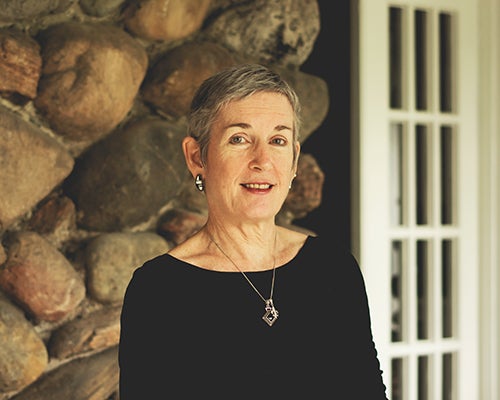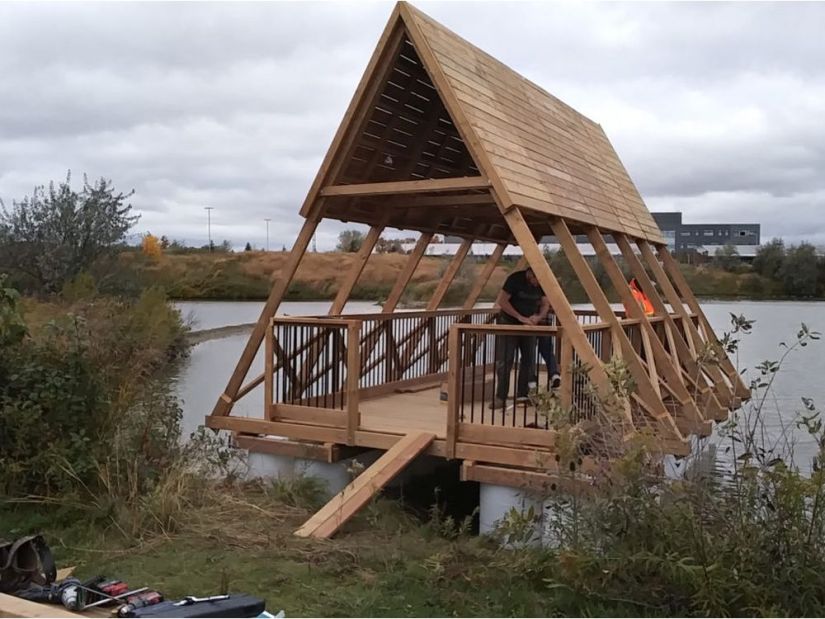Imagine a flood without sandbags, berms, pumps or panic — one that did little or no damage to waterfront homes.
That’s the vision of Water Institute member and University of Waterloo professor Elizabeth English, an architect who has pioneered research into the use of buoyant foundations and floating homes.
The foundations allow a home to rise straight up on guideposts when flood water moves in, float above trouble, and settle back into place when the water recedes.
“It’s exactly like putting a floating dock under your house,” explains English, an expert in amphibious architecture and the founder of the Buoyant Foundation Project, a non-profit dedicated to advancing the flood mitigation strategy in places such as Louisiana, Vietnam, Bangladesh, Nicaragua and Jamaica.

University of Waterloo Professor Elizabeth English, an architect and engineer, is working with the National Research Council to develop two floating home prototypes for use on First Nations reserves in northern Canada. With buoyant foundations, the homes can rise straight up on guideposts when floodwaters move in and settle back in place when the water recedes.
English is now working with the National Research Council (NRC) to test whether the strategy could work in Canadian flood zones.
The research is part of the NRC’s $42-million Climate Resilient Buildings and Core Public Infrastructure Initiative, a program designed to help communities and builders adapt to the challenges wrought by extreme weather events.
With a four-year, $500,000 NRC grant, English is developing two prototypes for use in Canada — one a cottage retrofit and the other a new home build.
The prototypes are being designed for First Nations communities that experience frequent spring flooding. The principal challenge, English says, is finding materials that will survive Canada’s extreme freeze-thaw cycle, and identifying places where the strategy can succeed.
“This is not an appropriate solution for every situation,” she notes. “It’s not a one-size-fits all kind of thing.”
Buoyant foundations can only be used on homes without basements, and they’ve not yet been engineered to withstand the destructive force of fast-flowing rivers, ice floes or big waves. But advances are being made, English says, and existing models could be used in protected bays along the Ottawa River.
It’s just so simple. That’s why I like it,” English says. “It works with nature; it’s not challenging nature. It’s not saying we have to stop the flood or move the water.
“It says, ‘The water is going to come and we’re going to accommodate it.’ The water becomes your friend rather than your foe: It’s the water that lifts the house and carries it up to safety.”
Read the full article from the Ottawa Citizen.

University of Waterloo professor Elizabeth English's team has built a floating research pavilion on a pond at the University of Waterloo using an NRC research grant to test materials that can best withstand Canada's freeze-thaw cycle.